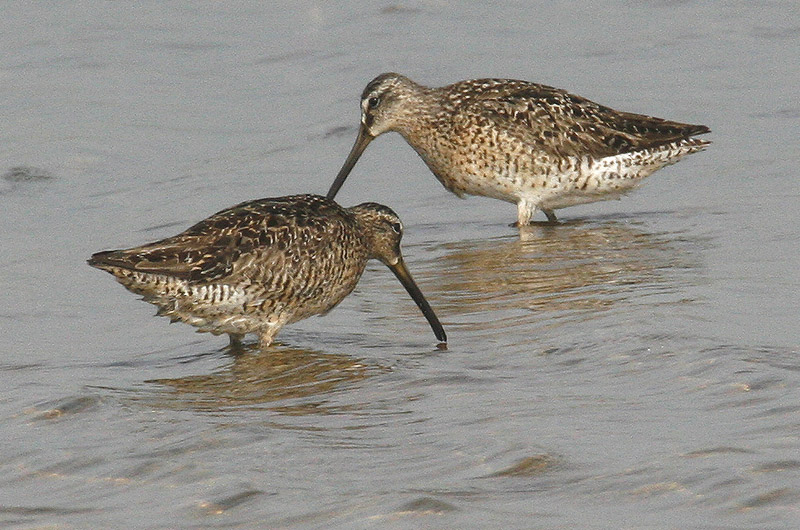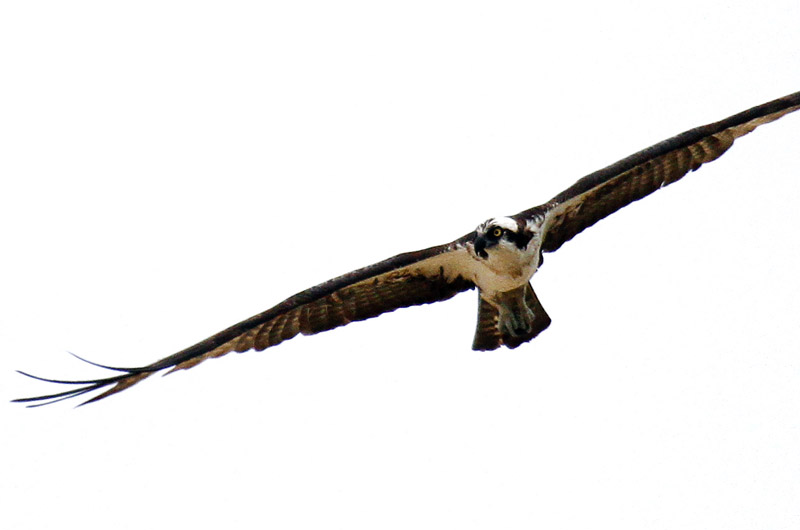A recent survey of the major breeding grounds of waterfowl — the prairie pothole region of the United States and Canada — predicts record numbers of ducks will be migrating south in the fall. A population of 49.52 million ducks was estimated, which is slightly higher than the 49.15 million estimate from 2014 and 43 per cent higher than the long-term (since 1955) average.
Mallards are the most abundant species, with an estimated 11.64 million, followed by 8.55 million blue-winged teal, 4.4 million scaup (both greater and lesser), 4.39 million shovelers, 4.08 million green-winged teal, 1.2 million redhead and 0.76 million canvasback. Of the 11 species studied, only pintail and scaup populations are lower than their 60-year long-term averages.
The ducks that are on the Vineyard in the fall and winter are also influenced by productivity in the eastern United States and Canada. These numbers are not as encouraging, as populations declined slightly from 2014. There were 0.54 million American black duck, 0.50 million ring-necked duck, 0.41 million mergansers (combined common, red-breasted and hooded), 0.41 million mallard, 0.36 million goldeneye (both common and Barrow’s), and 0.22 million green-winged teal. These populations are from two per cent to 15 per cent below their long-term average populations, except for the mallard which showed a slight increase.
These numbers are based on highly successful productivity of the past few years. Habitat quality and nesting success was lower in 2015 because the season was drier than in recent years, resulting in fewer wetlands in the study areas. As a result, they are predicting a higher than normal percentage of adults in the populations this fall. The U.S. Fish and Wildlife Service, the Canadian Wildlife Service and the non-profit Delta Waterfowl conducted these studies.
Bird Sightings
Julie Ben David reports that a pair of Carolina wrens finally showed up in his Oak Bluffs yard about three weeks ago. They had not been in his yard since before the snowy and icy winter. Kate Meleney and Sue Hruby also report finally seeing Carolina wrens, their first in ages. It sounds like the first fledglings of the year are spreading out and recolonizing areas where the wrens were wiped out by the winter weather.
Anne Lemenager has a house finch nesting in a hanging basket on her porch. Now this is not an unusual occurrence, but there are three brown-headed cowbird eggs accompanying the three house finch eggs. Those house finch parents will have their work cut out for them as they try to raise the cowbird chicks, which will grow to be much larger than their finch “parents.”
Steve Allen reports an immature bald eagle at Felix Neck on July 6.
Sort of new to the nesting scene are our American goldfinches. Scott Barclay reports a family of them in Island Grove on July 8. They are late nesters, as they nest once the thistles are in bloom.
The common loons are back. Sarah Mayhew reports quite a few common loons off of Lobsterville Beach on July 9. One of them was in full breeding plumage, and is probably a recent arrival from its more northern freshwater breeding grounds. The loons that we see at this time of the year that are in their duller winter plumage may be summering in our area without having made it up to their nesting grounds.
Also that day, Nora Papian spotted a greater shearwater swimming about 30 meters off the jetties at the entrance to Menemsha Harbor.
Robert and Molly Scott visited Cedar Tree Neck on July 10. They observed the nesting piping plover with a chick, and three species of warblers: yellowthroat, yellow warbler, and American redstart. The redstarts are easy to find as they are extremely active and they hang out near the parking lot.
Sioux Eagle reports that her red-bellied woodpeckers are teaching their young to eat the oranges she puts out. And Bill Jones reports that his pair of Baltimore orioles are teaching their youngsters how to eat oranges and grape jelly from their feeder.
The bobwhites of Mermaid and Brookside Farms are back in the news. James Suozzo observed them on July 11 as the pair crossed Middle Road with three chicks in tow.
John Banks heard a black-billed cuckoo on July 12 at Waterview Farm in Oak Bluffs.
Bill Post reports that he got great looks at a pair of scarlet tanagers in the trees at Kitts Field in Edgartown on July 12. And my July 11 guided birding tour saw a male scarlet tanager at Fulling Mill Brook. The male was close by and for a short while was in plain view at eye level. We also got good looks at a pair of hairy woodpeckers.
Black skimmers make the news this week because Patricia Correia observed one foraging on Jernegan Pond on July 13. This is somewhat surprising as this is a relatively small freshwater pond, and I associate skimmers with saltwater, even though I have observed them foraging in Sheriff’s Pond, the freshwater pond that is immediately adjacent to Eel Pond and their nesting grounds. And speaking of their nesting, Luanne Johnson reports that there are five pairs nesting on Little Beach and their young are about to start flying.
On July 13 there were numerous shorebirds on Norton Point. We found probably 40 short-billed dowitchers, 20 willets, two semipalmated sandpipers, 2 semipalmated plovers, and I got a quick glimpse of what I believe was a flock of about five sanderlings. There were several other flocks of small sandpipers that flew by too quickly to be identified. Oddly, we did not see either oystercatchers or piping plovers. These birds were all across from the boat launching ramp. I can only imagine what was on the beach between there and Wasque. Kayaks will be the best way to bird the tidal flats while part of the beach is closed to protect the plover chicks.
There are lots of birds around, so please get out looking for them, and be sure to report your bird sightings to birds@mvgazette.com.
Robert Culbert leads Saturday morning guided birding tours and is an ecological consultant living in Vineyard Haven.






Comments
Comment policy »